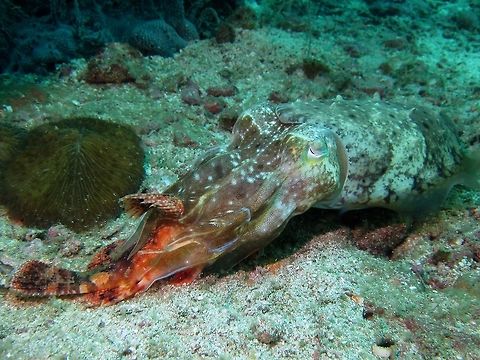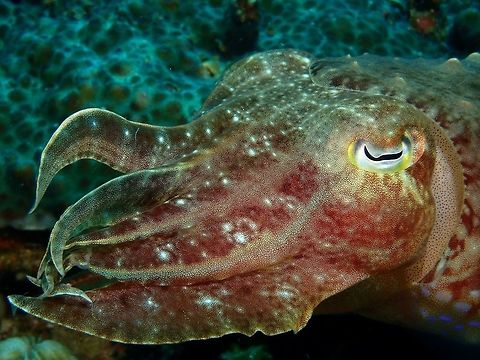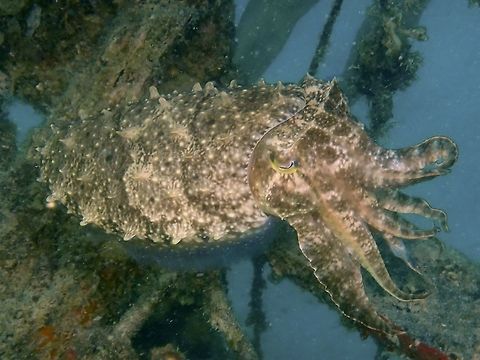
Habitat
The pharaoh cuttlefish is native to at least the western Indian Ocean, including the Red Sea and Persian Gulf. Of all the cuttlefish species in the Persian Gulf, it is the most commonly caught. Inhabiting the neritic zone, it is often found in depths up to 130 m. When hunting at night, it swims up to shallower parts of the sea to feast on a variety of smaller fish, crabs, and occasionally other cuttlefish.They have been observed to exhibit migratory behavior off of the south-west coast of India. They are more commonly found furthest north during August, and further south in May. They show an even distribution in October and February. Additionally, there are more juveniles present in May, and more adults present in August.
The Pharaoh cuttlefish prefer a medium to high amount of sunlight for den location during the day. Additionally, they prefer mud substrata during the day, but during the night prefer sand or mud substrata equally.

Reproduction
Spawning times vary depending on its habitat. Near Hong Kong, it mates during Spring, from March to May. In the Red Sea area, it takes place from August to October. After mating, the female deposits her eggs near the coast, between depths of 5 and 20 m.Pharaoh cuttlefish reproduce the same way as most other cuttlefish. Large males compete in combat until a victor is decided. This combat is often decided without any physical contact. The males circle each other performing threatening displays of color and tentacles until one male swims off in defeat. The victorious male then mates with females by grabbing them with their tentacles, turning the female so that the two animals are face-to-face, then using a specialized tentacle to insert sperm sacs into an opening near the female's mouth. The male then guards the female until she lays the fertilized eggs a few hours later.

Uses
It is a commonly fished species of cuttlefish in the Philippines, as well as the most economically important cuttlefish in the northern Indian Ocean. Off the coast of Australia, 90% of the cuttlefish caught are ''S. pharaonis''. It is often eaten by humans in these areas. Typically, cuttlefish is consumed as dried, shredded cuttlefish, a popular snack food. And, in the Qing Dynasty manual of Chinese gastronomy, the Suiyuan shidan, the roe of the cuttlefish is considered a difficult to prepare but sought-after delicacy.Additionally in the past Cuttlefish ink was an important dye, called sepia. Today, artificial dyes have mostly replaced natural sepia.
References:
Some text fragments are auto parsed from Wikipedia.